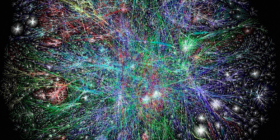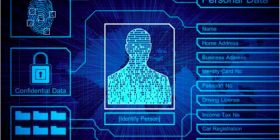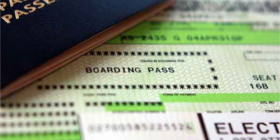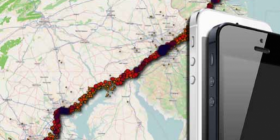Our comprehensive report on surveillance in Canada is available. Download it here.
Trend 8 – Bio-Surveillance

Biometric systems put physiological characteristics into a digital form. They range from simple, relatively reliable and inexpensive digital fingerprinting, to retinal and iris scanning, to more complex systems that measure body temperature, scent, or gait. The technology seems to be evolving toward artificial intelligence, prosthetics, and virtual bodies. The increased reliance on proliferating body surveillance appears to go hand in hand with the contemporary preoccupation of governments and the private sector with assorted social interventions designed to alter statistical levels of birth, recidivism, death, incarceration, and so on.
Understanding these developments, however, can prove challenging for both analysts and engaged citizens seeking to learn about current and future surveillance technologies. To comprehend these technologies, we must understand the critical distinction between authentication and identification. Whereas identification is concerned with knowing who you are as a unique individual, an organization can authenticate an individual as, for example, a legitimate recipient of a service without actually knowing that person’s identity. As noted in a research report on biometrics released by the US National Research Council:
Authentication technologies are typically based on one of three things: something the individual knows, such as a password; something the individual has, such as a physical key or secure token; and something the individual is or does. Biometric technologies employ the last of these. Unlike password- or token-based systems, biometric systems can function without active input, user cooperation, or knowledge that the recognition is taking place.1
In other words, biometric technologies are designed not to replace other authentication systems but to augment them within an increasingly “data rich” security environment. The passive capture of information through biometric systems raises special concerns about their potential (un)reliability and about our varying ability or inability to protect or control the capture, sharing, and transfer of this personal information.
Limited only by the human imagination, body surveillance is emerging in a range of areas. At Canadian schools, for instance, children’s fingerprints are being used to facilitate cashless payment systems.2 The Calypso Waterpark near Ottawa uses fingerprinting for entrance payments, and several Canadian firms have installed, or are planning to install, a system designed to track employee hours, overtime, and tardiness through fingerprinting.3 At the Port of Halifax, the backs of port workers’ hands are scanned to manage port access.4 As with border-security strategies, these entail complex blends of private and public schemes. Together with alleged efficiency payoffs, the promise of enhanced security—often without much concrete evidence to support such claims—frequently seems reason enough for business owners, policy makers, and shareholders to embrace biometric surveillance.
What’s Wrong with Biometrics?
State policy makers and law enforcement agencies have generally supported these technologies of authentication, regardless of the relative dearth of sound qualitative and quantitative data that convincingly demonstrate their efficacy. In fact, reports have raised serious issues about the reliability and the high false-positive rates of biometrics: such false positives include situations where an individual has been incorrectly deemed risky or mistakenly placed on a watch list or no-fly list.5 These obviously disconcerting situations do not even address the broader socio-cultural and politico-economic implications of relying on these technologies, which often require more data- reliant systems of capture and preassessment.6 They also reflect an undue dependence on technical solutions in the absence of convincing research into the efficacy and broader impacts of their use.7
In her insightful analysis of biometrics, Shoshana Magnet concisely asserts, “Human bodies are not biometrifiable.”8 She goes on to discuss how, despite the enormous financial investment in biometric technologies, the human body is simply not static enough to make this form of identification reliable. This critique, heard within the humanities and social sciences for the past decade, is beginning to be echoed within the natural sciences. Both the 2012 National Research Council report Biometric Recognition and extensive research at the University of Notre Dame highlight problems posed by the dynamic quality of the physical characteristics that biometrics purport to identify, such as changes to the iris as people age.9 Questions have also been raised about the underlying science that converts physiology into algorithms. Put succinctly by the authors of the National Research Council report:
Users and developers of biometric systems should recognize and take into account the limitations and constraints of biometric systems—especially the probabilistic nature of the underlying science, the current limits of knowledge regarding human individual distinctiveness, and the numerous sources of uncertainty in biometric systems.10
This certainly does not reflect the tenor of statements from security professionals, policy makers, and border-security managers, who persistently extol the virtues of the biometrics that appear in such things as passports, body scanners, and trusted-traveller cards.
Conclusion
So where do we go from here? How do we, as citizens who have often been rendered more vulnerable by the intensified power of the state and private sector, critically engage with technologies and systems that rely on body surveillance? Unfortunately, there is no “how to” guide in this matter. A range of possibilities exists, however, for an engaged citizenry to raise important questions and to become attuned to the often dubious assumptions, commitments, and truth claims that are part of the increasing prevalence of these technologies. Although the turn to body surveillance, notably biometric systems, is part of a widespread technology fetish, there are also deeper systemic factors that make the introduction of these systems appear logical. One such factor is the general embrace of the practice of governing through risk, explained in more detail in Trend 2.11 This entails strategies developed to deal with incalculable risks, or to govern what is ungovernable. Further, the need to critically engage with body surveillance is not an indictment of the technologies themselves. Simplistic normative judgments serve no purpose here. Some biometric systems are minimally intrusive, have robust privacy protections, and effectively serve the interests of security and efficiency. There are appropriate and inappropriate uses of such devices.
So we need not toss the baby out with the bathwater. But unfortunately, the bathwater is incredibly murky. The primary challenge for citizens in engaging with body surveillance devices is to appreciate the logics that underwrite them. This can include the assumption that, by its very nature, body surveillance is more reliable and thus provides greater security than alternate systems; or the claim that introducing technologies allows us to escape the more complicated politics of racial profiling; or the assumption that undergirds technologies such as avatar—that body surveillance is a more reliable way to detect the types of deception that are to be expected in border spaces. Consequently, we might want to refuse the body scanner at the airport in favour of the physical check by an agent, or to choose not to enrol in trusted-traveller schemes that rely on biometric systems, or to challenge an employer’s decision to track employees with biometric systems, or to stand in a longer line at the local fitness facility in order to avoid the biometric payment scheme. Unfortunately, the immediate consequence of such refusals often appears to amount to little more than reducing our own mobility. So how do we engage more effectively with body surveillance issues?
The public may find it hard to participate in debates about these devices given that such discussions are dominated by assorted experts and consultants, many of whom have financial ties to the industry they represent. Advocates of biometrics and body scanners frequently try to dismiss those who criticize such technology with the accusation that such critics threaten the state’s security interests. Moreover, public debate may not exist at all when governments use quiet strategies to bypass public discussion of potentially controversial issues, as was the case when the Canadian government signed the Beyond the Border agreement (2011) that stipulates that Canada share biometric data with the United States.12
The often impenetrable specialist and technocratic discourse that surrounds such devices, together with the alleged “security imperatives” associated with their use, gives the impression that decisions surrounding surveillance of almost any form have been whisked from the democratic process. This should not be the case. Conventional politics are as relevant here as in any other area. Decisions about many forms of monitoring remain in the hands of politicians, subject to parliamentary committees, media scrutiny, and public pressure. Although influential underlying assumptions shape the application of these technologies, we can challenge public figures and funding agencies about these logics. Informed awareness of these devices, as well as the judgments that undergird them, provides ample space to question their rapid embrace. As critical voices within the scientific community emerge, the need to take advantage of this moment cannot be overemphasized. It is as citizens that we can speak for vulnerable groups, such as the refugees and asylum seekers who face the most developed and nefarious technological systems of body surveillance, both in Canada and abroad. A critical eye should scrutinize all forms of body surveillance before that eye is forced to provide a retinal scan. Read the full trend in the free download of the Transparent Lives: Surveillance in Canada book.
- 1. National Research Council, Biometric Recognition: Challenges and Opportunities (Washington, DC: National Academies Press, 2012), 5.
- 2. See “Canadian Schools Benefiting from Biometric Payment System,” ID News Canada, 30 June 2010, http://www.idsuperstore.ca/idnews/education-id-news/canadian-schools-ben... biometric-payment-system-19865906/.
- 3. On the waterpark payment system, see Calypso’s “Money at My Fingertip” page, http://www.calypsopark.com/parc-aquatique/en/services/money-at-my-finger... and “Largest Themed Waterpark in Canada to Open on June 7,” ID News Canada, 4 June 2010, http://www.idsuperstore.ca/idnews/sports-and-recreation-id-news/largest-... june-7-19820328/. On the tracking of employees, see S. Dobson, “Accuracy Vital to Overtime Tracking,” Canadian HR Reporter, 10 September 2007, 26, 30; D. Harder, “Fingerprint Technology, Pinpoint Accuracy,” Canadian HR Reporter, 8 September 2008, 23, 34; and “Biometrics Security to Track Working Hours,” The Current, with Anna Maria Tremonti, CBC Radio 1, 8 November 2012, http://www.cbc.ca/thecurrent/episode/2012/11/08/biometrics-security-to-t....
- 4. See “Halifax Port Security to Scan Veins in Hands,” CBC News, 7 September 2007, http://www.cbc.ca/news/canada/nova-scotia/halifax-port-security-to-scan-....
- 5. See National Research Council, Biometric Recognition, 4–5; and Samuel P. Fenker and Kevin W. Bowyer, “Analysis of Template Aging in Iris Biometrics,” paper presented at the IEEE Computer Society Biometrics Workshop, 17 June 2012, http://www3.nd.edu/~kwb/ FenkerBowyerCVPRW_2012.pdf.
- 6. See National Research Council, Biometric Recognition, esp. chap. 4.
- 7. See Benjamin J. Muller, “(Dis)Qualified Bodies: Securitization, Citizenship and Identity Management,” in Securitizations of Citizenship, ed. Peter Nyers (London and New York: Routledge, 2009), 77–93; and Benjamin J. Muller, “Testifying While Critical: Notes on Being an Effective Gadfly,” in Research Methods in Critical Security Studies: An Introduction, ed. Mark B. Salter and Can E. Mutlu (London and New York: Routledge, 2012), 109–12.
- 8. Magnet, When Biometrics Fail, 2.
- 9. See Fenker and Bowyer, “Analysis of Template Aging in Iris Biometrics.”
- 10. National Research Council, Biometric Recognition, 5.
- 11. See Aradau and van Munster, “Governing Terrorism Through Risk.”
- 12. Government of Canada, Beyond the Border: A Shared Vision for Perimeter Security and Economic Competitiveness, February 2011, http://actionplan.gc.ca/grfx/psec-scep/pdfs/bap_report-paf_rapport-eng-d....














